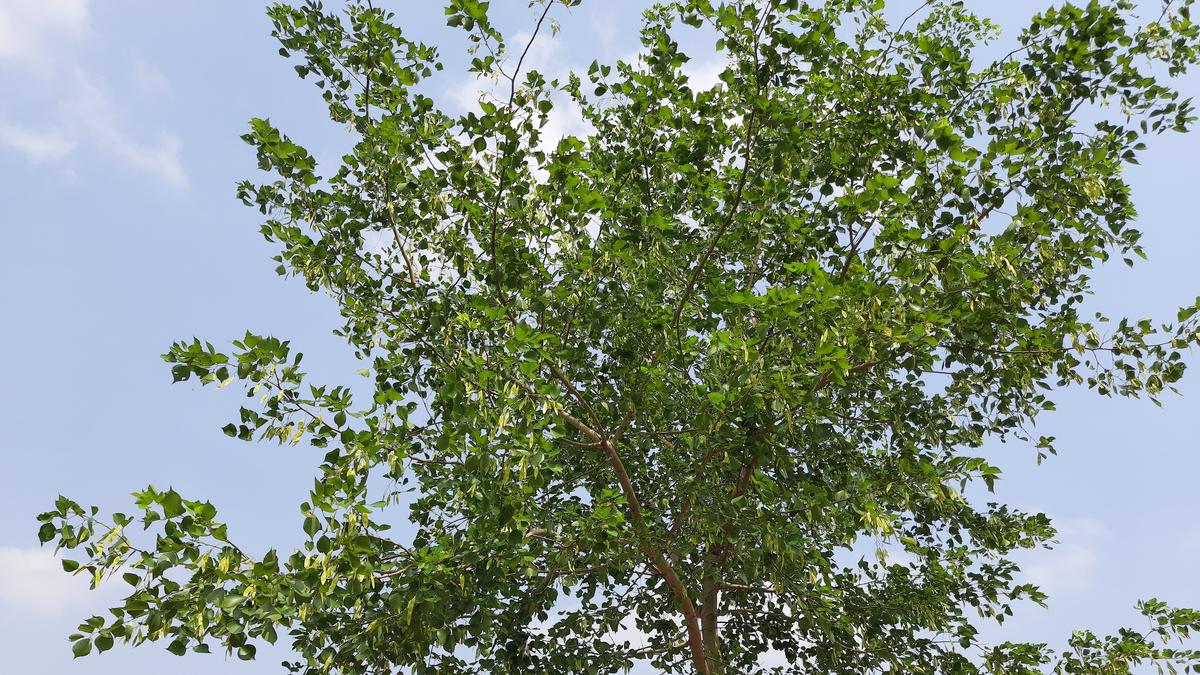Indian rosewood tree
| Photo Credit: Getty Images
Only 17.2% of India’s suitable habitat for Dalbergia latifolia — Indian rosewood — lies within protected areas, according to recent habitat modelling by the Institute of Wood Science and Technology (IWST), Bengaluru.
The species, native to Tamil Nadu’s Nilgiris, Anamalai, and Parambikulam ranges, now finds itself largely unprotected and increasingly vulnerable to exploitation as the State government decided not to renew the Tamil Nadu Rosewood (Conservation) Act, 1995 beyond February 2025.

Characteristics
Often called the “ivory of the forests,” Indian rosewood is prized for its rich grain, deep colour, and exceptional durability. It serves as both a premium timber resource for the furniture and handicraft industries and a keystone ecological species.
Rosewood trees improve soil fertility through nitrogen fixation, support bird and insect diversity, and act as long-term carbon sinks.
Concerns
Recent field studies by the Indian Council of Forestry Research and Education, led by the IWST, across 12 States between 2019 and 2025 show a sharp decline in rosewood populations, particularly in Tamil Nadu. The State recorded just 2.85 trees per 0.1 hectare — markedly lower than Karnataka’s 6.19 and Kerala’s 5.38.
Researchers observed that populations are dominated by mature, ageing trees with almost no regeneration in the wild. Seedlings are rare, and in many areas, entirely absent.
The loss of regulatory protection this year has heightened concerns. The Tamil Nadu Rosewood Trees (Conservation) Act, introduced in 1995, had served as a safeguard for decades. The Act prohibited the cutting of rosewood without government permission and helped prevent industrial-scale exploitation. It was extended in 2010 for a period of 15 years and was left to lapse this year without renewal.
Experts say with the law gone, privately owned trees, many found in tea plantations of the Nilgiris, are now at risk. These trees, though scattered and often overlooked, have functioned as important genetic seed sources.
As per the IWST, habitat modelling using MaxEnt software, conducted with 3,224 geo-referenced occurrence points and 19 bioclimatic variables, has identified six core districts in Tamil Nadu with high habitat suitability: Nilgiris, Coimbatore, Erode, Tiruppur, Dindigul, and Theni.
Yet, the limited overlap between suitable habitat and protected areas means that most of the remaining rosewood populations are exposed to legal felling and land-use change.
According to T.N. Manohara, Scientist-F, IWST, climate models suggest suitable habitat will likely shrink in the coming decades, compounding the species’ vulnerability. “The threats to Indian rosewood extend beyond habitat degradation. International demand, particularly for luxury furniture and musical instruments, has increased pressure on remaining stands,” he says.
Although the species is listed under Appendix II of CITES and has been classified as Vulnerable by the IUCN since 2018, domestic regulation in India has not kept pace. Within India, rosewood has remained at Near Threatened status since the last national assessment in 2011–12.
Mr. Manohara says the Tamil Nadu government must urgently reinstate legal protections and bring in a tagging and certification system to clearly differentiate plantation-grown rosewood from illegally harvested wild timber.
Published – August 31, 2025 02:04 pm IST

